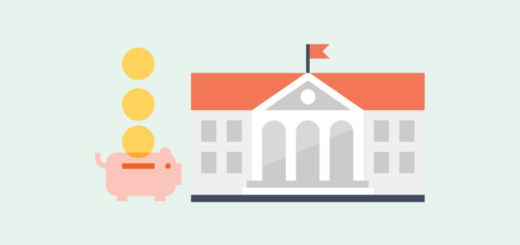5 Ways To Pay Off Your Student Loans
If you have student loan debt, you may be wondering what your options are for managing it, especially if your balance hovers near six figures. According to statistics gathered by Credible, of the 43 million Americans who owe student loans, 2.8 million owe $100,000 or more.
The good news is there are things you can do to pay off student loan debt faster while potentially saving money.

How do I pay off $100,000 in student debt?
Whether you owe private or federal student loans, the total amount is often a daunting number to work with. So you’ll need a strategy for paying it off. With that in mind, here are five steps for school loans:
- Consider refinancing private student loans
- Add a cosigner to get loan refinancing at lower rates
- Get help with loan repayment through your employer
- Prioritize repaying student loans by interest rate
- Weigh federal options for managing school loans
1. Consider refinancing private student loans
Student loan refinancing can make loans easier to handle if you’re able to secure lower rates and lower payments. By saving money on interest, more of your monthly payments go toward the principal, allowing you to pay off debt sooner.
If you’re considering refinancing private loans, you should estimate potential monthly payments using an online refinance calculator first.
2. Add a cosigner to get loan refinancing at lower rates
Qualifying for the lowest rates on private student loan refinancing often hinges on your credit history and credit score. Things like a high credit utilization rate or high debt-to-income ratio could work against you.
Adding a cosigner to your loan application could help you appear more creditworthy. Just consider the implications of asking someone to cosign so you can refinance to a lower rate. If you default on payments, a delinquency could cost both of you credit score points and potentially damage the relationship.
3. Get help with loan repayment through your employer
It’s possible that your employer may offer benefits to help you chip away at your loan balance. For instance, the CARES Act included a provision that allows employers to offer up to $5,250 in nontaxable payments to employees for student loan repayment.
Getting in touch with your employer’s human resources department can help you determine what student loan assistance is available, if any.
4. Prioritize repaying student loans by interest rate
If you have multiple school loans, you could use the debt avalanche method to pay off student loan debt. This method advocates paying off debts in order from the highest interest rate to the lowest. Doing so means saving money on interest.
If you want to chip away at your loan balance faster, you may consider the debt snowball method instead. This strategy involves paying off debts from lowest balance to highest, regardless of interest rates.
5. Weigh federal options for managing school loans
If you have federal loans, consolidating them may be a good move. While consolidating federal student loans won’t lower your interest rate, it can streamline your monthly payments.
Public Service Loan Forgiveness may also be an option, depending on your career plans. This type of loan forgiveness requires you to enroll in one of the government’s income-based repayment plans and make 120 qualifying payments.
Should I refinance if I have federal loans?
Refinancing federal student loans may be tempting if interest rates are low but it’s generally not advisable. That’s because it means giving up certain benefits, including:
- CARES Act provisions
- Deferment and forbearance periods
- Grace periods
- Income-based repayment plans
- Government-sponsored loan forgiveness
You may be better off consolidating instead of refinancing federal loans to keep those protections. Remember that you can still make payments to your loans even during the CARES Act forbearance period.
**Original article by Rebecca Lake




